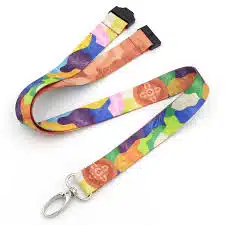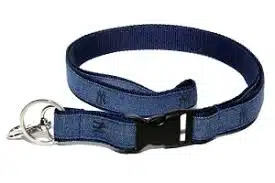Table of Contents
Lanyards are ubiquitous accessories in workplaces, conferences, schools, and events worldwide. They serve as practical tools for holding IDs, keys, badges, and other small items, promoting convenience and organization. However, despite their widespread use, lanyards have been associated with safety concerns, especially in environments where they are used extensively or improperly. Understanding these safety issues and implementing effective measures to address them is crucial for ensuring the well-being of users.
This comprehensive guide delves into the safety concerns related to lanyards, explores the factors contributing to these risks, and offers practical solutions to mitigate potential hazards. By the end of this article, readers will have a thorough understanding of how to use lanyards safely and responsibly.

The Popularity and Practicality of Lanyards
Lanyards have gained popularity due to their simplicity, cost-effectiveness, and versatility. They are made from various materials such as nylon, polyester, cotton, or woven fabrics, and are equipped with clips, hooks, or badge holders for attaching identification cards, keys, or access cards.
Keywords: Lanyards, safety concerns of lanyards, lanyard safety, lanyard use, workplace safety, event management, lanyard materials, lanyard accessories
Types of Lanyards and Their Uses
Lanyards come in several types, each suited for different environments and needs:
- Standard Lanyards: Typically made from nylon or polyester, used in offices and conferences.
- Breakaway Lanyards: Designed with a safety feature that releases under tension, ideal for schools and environments with young children.
- Retractable Lanyards: Equipped with a retractable cord for ease of access, common in security and healthcare settings.
- Eco-friendly Lanyards: Made from biodegradable materials, suitable for environmentally conscious organizations.
Safety Concerns Associated with Lanyards
While lanyards are valuable tools, their improper use or design flaws can pose significant safety risks. Below are some of the primary safety concerns:
1. Strangulation and Choking Hazards
One of the most serious risks associated with lanyards is the potential for strangulation or choking. If a lanyard is long, tight, or improperly secured, it can catch on objects or around a person’s neck, leading to injury or even death. This risk is particularly high among children and in environments where lanyards are worn loosely.
Keywords: strangulation hazards, choking risk, safety lanyards, child safety, neck injury prevention
2. Entrapment in Machinery or Equipment
Lanyards with dangling straps or accessories can become caught in machinery, conveyor belts, or other equipment, causing injuries or equipment damage. This is especially relevant in industrial settings where machinery operation is involved.
Keywords: machinery safety, industrial lanyards, equipment safety, entrapment risks
3. Fall Hazards
In certain environments, especially construction sites or elevated workplaces, a lanyard attached to a harness can prevent falls if used as a part of fall arrest systems. Conversely, a poorly secured or faulty lanyard can fail, resulting in falls and injuries.
Keywords: fall safety, fall arrest lanyards, construction safety, fall prevention
4. Theft and Loss
Lanyards used for holding keys or ID badges can be easily removed or lost, leading to security breaches or the need for replacements. While not a direct safety concern, loss of identification can compromise security protocols.
Keywords: security lanyards, ID badge safety, theft prevention, access control
5. Material and Durability Concerns
Low-quality materials may break or fray over time, creating sharp edges or loose parts that can cause cuts or injuries. Ensuring the durability and quality of lanyards is essential for safety.
Keywords: durable lanyards, material safety, quality assurance, lanyard maintenance

Addressing the Safety Concerns of Lanyards
Mitigating the safety risks associated with lanyards requires a combination of proper design, user awareness, and organizational policies. Here are key strategies to ensure lanyard safety:
1. Use Breakaway or Safety Lanyards
Implementing breakaway lanyards that release under stress can prevent strangulation injuries. These are especially recommended in environments with children or high activity levels.
Keywords: breakaway lanyards, safety lanyards, child safety, risk reduction
2. Keep Lanyards Short and Secure
Encourage users to wear lanyards at a length that minimizes dangling excess. Properly securing the lanyard to prevent it from catching or snagging reduces entrapment risks.
Keywords: lanyard length, secure lanyards, safety best practices
3. Regular Inspection and Maintenance
Organizations should regularly inspect lanyards for signs of wear, fraying, or damage. Replacing worn or damaged lanyards promptly maintains safety standards.
Keywords: lanyard inspection, maintenance, safety protocols
4. Material Selection and Quality Control
Choose high-quality, durable materials that withstand daily wear and tear. Avoid cheap, poorly made lanyards that may break easily.
Keywords: high-quality lanyards, durable materials, safety standards
5. Educate Users on Proper Use
Training users on the safe wear and handling of lanyards is critical. Emphasize not to wear lanyards around the neck tightly, avoid attaching to moving machinery, and report damaged lanyards.
Keywords: user education, safety training, proper lanyard use
6. Implement Safety Policies
Organizations should establish policies regarding lanyard use, including prohibiting excessively long lanyards, mandating safety features, and enforcing regular inspections.
Keywords: safety policies, organizational guidelines, lanyard safety policies
7. Use Appropriate Lanyard Accessories
Select accessories like badge reels, retractable cords, or clips that are designed for safety and do not pose additional risks.
Keywords: lanyard accessories, safety clips, badge reels

Innovations and Improvements in Lanyard Safety
Advancements in materials and design have contributed to safer lanyard options. Some of these innovations include:
- Breakaway mechanisms that activate with minimal force.
- Reflective or high-visibility materials for better detection.
- Eco-friendly and non-toxic materials reducing health concerns.
- Ergonomic designs that reduce strain and discomfort.
Organizations should stay informed about emerging safety features and adopt these improvements.
Industry Standards and Regulations
Various safety standards and guidelines govern lanyard manufacturing and use:
- Occupational Safety and Health Administration (OSHA): Provides regulations for fall protection and equipment safety.
- ISO Standards: International standards specifying safety and quality requirements for lanyards.
- ANSI Standards: American National Standards Institute guidelines for personal fall protection.
Adhering to these standards ensures that lanyards meet safety benchmarks and minimize legal liabilities.
Conclusion
Lanyards are indispensable tools in many settings, offering convenience and organization. However, their safety concerns cannot be overlooked. By understanding the risks—such as strangulation, entrapment, and material failure—and implementing proactive safety measures, organizations and individuals can significantly reduce the potential for accidents.
Employing high-quality, safety-engineered lanyards, conducting regular inspections, educating users, and adhering to established standards are essential steps toward creating a safer environment. As innovations continue to emerge, staying informed and vigilant will ensure that lanyards remain safe accessories for everyday use.
Keywords Recap: Lanyards, safety concerns of lanyards, lanyard safety, lanyard use, workplace safety, event management, lanyard materials, lanyard accessories
If you need images or videos to complement this article, feel free to ask for assistance!
